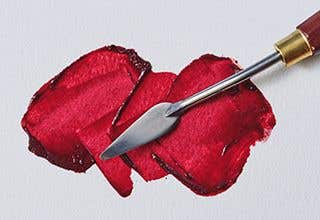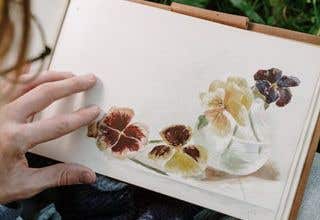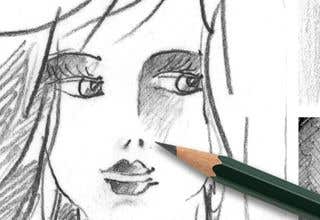For oil painters, oil brushes are valuable tools and a crucial investment. Over time, paint residue and accumulation can affect the performance of brushes, causing bristles to stiffen, lose shape, and become less effective. Regular cleaning is essential to maintaining their quality and prolonging their lifespan. In this article, we will discuss why keeping oil paint brushes clean is important and the impact of paint residue on brush performance. We will also provide tips and best practises for regular brush cleaning to ensure optimal performance and longevity.
Preparation for Cleaning Brushes

Maintaining your brushes is crucial for preserving their quality and increasing their lifespan as artists. This comprehensive guide includes essential preparations for cleaning brushes, necessary materials, and practical tips to ensure safe brush cleaning while keeping their quality intact.
Materials Needed to Clean Brushes

To properly clean your brushes, some materials are necessary. These materials include warm water, soap, paint thinner, a bucket for cleaning, a brush cleaner, and a bristle brush comb.
Tips for Safe Brush Cleaning
To clean your brushes properly, start by working in a well-ventilated area to avoid inhaling harmful fumes from solvents like paint thinner. It's important to wear protective clothing and gloves to protect your skin. When cleaning your brushes, avoid using excessive amounts of soap or solvent, as it can damage the bristles.
Choosing the Right Solvent Based on the Paint Used
Different paints require specific solvents for cleaning. For instance, oil paints require mineral spirits or turpentine, while watercolour and acrylic paints may require only soap and water. Using the wrong solvent can be harmful and damage the brush, which makes it essential to use the correct solvent. Find the right solvent for oil paint here.
In summary, maintaining your brushes in excellent condition is crucial for artists. This practise can significantly prolong their lifespan, maximising your investment in painting tools. Following best practises such as cleaning in a well-ventilated area, using the proper solvents, and using effective cleaning techniques will ensure your brushes remain in great condition, ready to produce outstanding artwork every time.
Cleaning Techniques for Brushes

Taking care of your painting brushes is crucial to keeping them in top condition and extending their lifespan. Regular cleaning is one of the main steps to maintaining their quality. Here are some cleaning techniques for your brushes:
Brush cleaning technique using paint thinner or mineral spirits
This traditional cleaning method is suitable for oil-based and solvent-based paint brushes. First, remove excess paint from the brush with a rag or paper towel. Repeat the process, if necessary, until the brush is clean. Finally, rinse it with water and let it dry.
Brush cleaning technique using soap and water
This method is suitable for water-based paints such as acrylic or gouache. First, rinse the brush with water, then add some soap to your palm or cleaning surface. Swirl the brush around in the soap, creating a lather. Rinse the brush in clean water, repeating the process until it's clean. Gently reshape the bristles before letting it dry.
Common alternatives to traditional cleaning solvents
If you prefer to use environmentally friendly methods, there are several alternatives to solvents. For example:
- White vinegar: mix one part vinegar with two parts water in a container. Clean the brush by swirling it around the solution, then rinse with clean water.
- Olive oil: add a few drops of olive oil to your palm or cleaning surface, then rub the bristles of the brush in the oil. Rinse with soap and water.
- Fabric softener: mix one-part fabric softener with four parts water in a container. Clean the brush as you would with traditional solvents, then rinse with water.
Different ways to use alternatives
There are also different ways to use these alternatives:
- Instead of a brush cleaner, use white vinegar to soften and clean the bristles of old or stiff brushes in a jar overnight.
- If you're out of soap, you can use fabric softener or olive oil as a substitute.
- For a deep cleaning, you can use a mixture of baking soda and vinegar. Dip the brush into the mixture, then rinse it with water and a small amount of soap.
In summary, it's crucial to select an effective cleaning technique for your brushes and maintain a regular cleaning schedule. Thoroughly cleaning your brushes after every use preserves their quality and ensures they remain in excellent condition for long periods of time.
Tips for Maintaining Brush Shape and Bristles

Taking proper care of your brushes is essential to maintaining their shape and ensuring their longevity. Here are some tips to help you preserve the shape and quality of your brushes:
How to reshape brush heads after cleaning
After cleaning your brushes, it’s essential to reshape the bristles to restore their original form. Here’s how to reshape your brush heads:
- First, gently squeeze out the excess water to remove any remaining moisture.
- Use your hands or a cloth to reshape the bristles to their original form, paying attention to their shape and direction.
- If the brush head is still damp, use a clothespin or clip to hold the brush hairs in place as they dry.
The role of protective sleeves and covers
Protective sleeves and covers can help maintain the shape of your brushes and protect them from damage. Here’s how they can help:
- Brush sleeves are designed to protect the bristles from dust and damage when you’re transporting them to different locations. They also help keep the bristles in shape.
- Brush covers offer protection when you store your brushes. The covers are designed to enclose the bristles fully, which helps prevent them from bending or breaking.
How to preserve natural bristle brushes
Natural bristle brushes require special care to ensure their longevity. Here are some tips:
- Use a mild soap rather than harsh chemicals or strong solvents to clean natural bristle brushes.
- Using hot water for cleaning natural bristle brushes should be avoided, as it can cause damage to the bristles and even lead to breakage.
- Maintain the brush shape and prevent bending of the bristles by storing natural bristle brushes horizontally.
In summary, maintaining your brushes' shape and quality is achievable with simple steps such as reshaping brush heads, using protective sleeves and covers, and putting extra care into natural bristle brushes that prolongs their lifespan and keeps them in top condition so that they can produce consistently beautiful and high-quality artwork every time.
Best Practices for Drying and Storing Brushes

Proper drying and storage of brushes are crucial for ensuring their longevity and maintaining their quality. Here are some tips and recommendations for the proper way to dry and store your brushes:
Tips for proper drying after cleaning
Drying is the final step in the cleaning process and it's essential to ensure that the bristles dry correctly. Here are some tips to follow:
- Use a clean towel or cloth to remove excess water from the bristles.
- Gently reshape the bristles to their original shape.
- Hang the brushes to dry horizontally, ensuring that the bristles are not touching any surface. This will prevent the bristles from bending or becoming misshapen.
The importance of a proper brush holder
A brush holder is an essential component when it comes to storing brushes. Here is why:
- A brush holder will protect the bristles from being bent, deformed, or damaged.
- A brush holder will also allow for proper air circulation to promote quick and effective drying of the bristles.
Cleaning frequency and care recommendations
Cleaning your brushes frequently is key to maintaining their quality and preventing paint buildup. Here are some cleaning and care recommendations:
- Clean your brushes with soap and water after each use.
- Avoid using hot water, as this will damage the bristles.
- Keep your brushes soft and pliable by using a conditioning oil or washing with soap and water.
- Avoid using harsh chemicals or solvents, as these can damage the bristles and break down the glue that holds the brush together.
In summary, proper drying and storage of brushes is crucial for maintaining their performance, longevity, and quality. Following the provided tips can keep brushes in excellent condition, reduce replacement costs, and ensure effective performance for years. Proper cleaning and storage of brushes is one way to extend their lifespan.
Expert Tips for Troubleshooting Common Brush Problems
Keeping your brushes in top condition can be a challenge, especially when problems arise. Here are some expert tips for troubleshooting common brush problems that you may encounter:
How to revive hardened bristles
If your brush bristles have become hardened due to the accumulation of paint or other substances, it's vital to revive them. Here are some tips:
- Soak the brush in hot water with a small amount of fabric softener or vinegar. This will help to soften the bristles.
- Use a comb or brush cleaner to work out the hardened residue from the bristles. Be sure to comb through gently to avoid breaking the bristles.
Tips to remove paint that’s stuck to a brush
Getting paint stuck in your brush can be frustrating, but it can often be easily resolved. Here are some tips:
- Soak the brush bristles in warm soapy water for a few minutes to help loosen the paint.
- Use a gentle brush cleaner or comb to work gently through the bristles to remove the paint.
- For stubborn paint, use a solvent like mineral spirits or rubbing alcohol. Dampen the bristles with the solvent and gently brush away the paint.
Conclusion
In summary, brush care is an integral part of maintaining their quality and prolonging their lifespan. Following the techniques outlined in this article can keep brushes in excellent condition, prevent damage or deterioration, and produce high-quality artwork. Regular cleaning and maintenance are crucial, including using proper cleaning techniques, reshaping brushes, and horizontal storage with protective covers or sleeves. By taking good care of brushes, artists can enjoy the reliability and longevity of their tools for painting projects, leading to stunning results.
Additional Readings
Oil Painting For Beginners: Your Guide to Working with Oil Paints
How to Clean Paint Brushes
Finding the Right Paint Brush for your Chosen Technique
Understanding Different Brush Shapes
Frequently Asked Question - Clean Oil Paint Off Brushes
Q: Why is it important to clean oil paint off brushes?
A: Regularly cleaning oil paint off brushes is important to maintain the brushes' quality and longevity. Leaving remnants of paint on the brush can cause bristle damage and paint tainting in future use.
Q: Can I use water to clean oil paint off brushes?
A: No. Oil paint is not water-soluble, so water alone will not effectively clean oil paint off brushes. Instead, solvents like mineral spirits or turpentine are typically used.
Q: What kind of brush cleaner should I use for oil paint?
A: There are several types of brush cleaners available for oil paint, including natural alternatives like coconut oil or baby shampoo, and commercial cleaners specifically made for oil paint brushes. It's recommended to follow the manufacturer's instructions when selecting and using a brush cleaner.
Q: How often should I clean my oil paint brushes?
A: After every painting session, it's best to clean oil paint brushes thoroughly to avoid the paint hardening and damaging the bristles. Even if brushes aren't used frequently, they can still gather gunk, so it's essential to clean them whenever they're used.
Q: Can I reuse solvent for cleaning oil paint brushes?
A: Yes and no. Solvents can be strained and reused, but over time, the accumulation of paint particles in the solvent can reduce its effectiveness. As a general rule, it's best not to reuse solvent too many times to avoid cross-contamination and health hazards.








